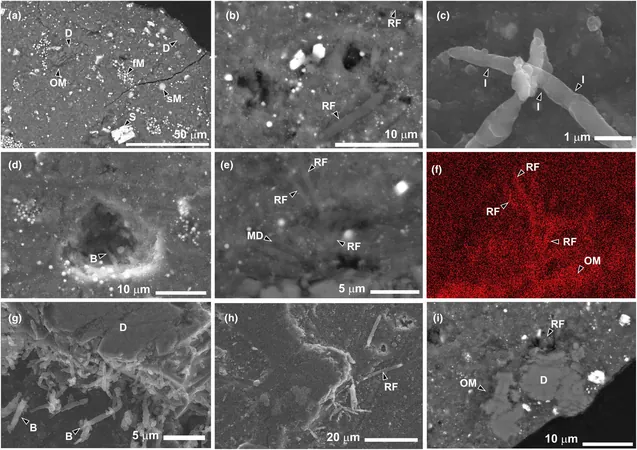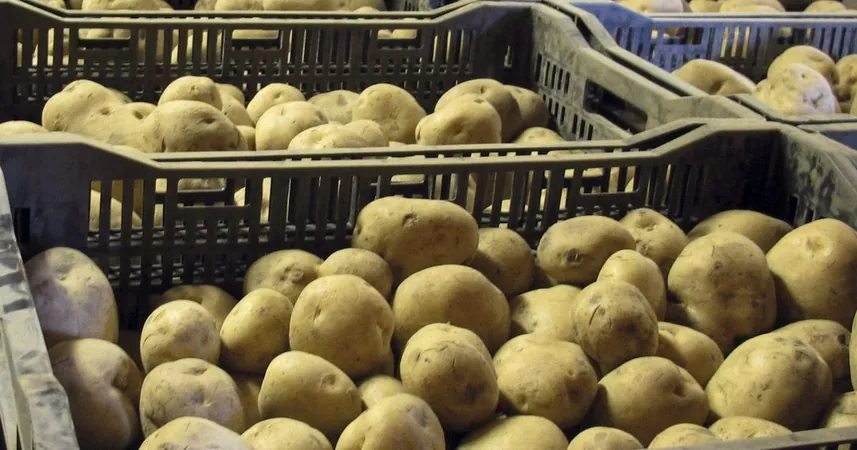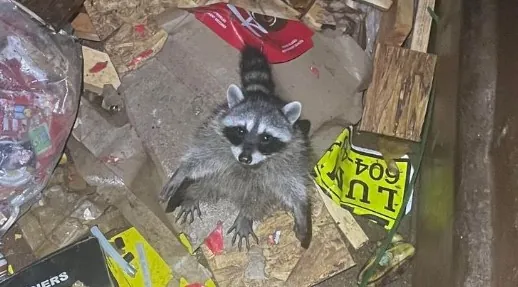
Astounding Discovery: Terrestrial Life Quickly Colonizes Ryugu Asteroid Sample Despite Stringent Controls!
2024-11-22
Author: Olivia
Groundbreaking Study Findings
In a groundbreaking study, researchers from Imperial College London have revealed astonishing findings regarding a sample retrieved from asteroid Ryugu. Focusing on the concept known as panspermia—the hypothesis that life can endure transitioning between celestial bodies—the implications of this study could revolutionize our understanding of life's origins across the cosmos.
The Investigative Focus
The investigation, published in the journal Meteoritics & Planetary Science, centers around a tiny particle, labeled A0180, which was collected by Japan's JAXA Hayabusa 2 mission. Transported back to Earth in a hermetically sealed environment, the sample was meticulously handled in an ultra-clean class 10,000 laboratory, with the intent of avoiding any contamination from terrestrial life.
Unexpected Microbial Colonization
Despite these stringent measures, researchers discovered that the sample was rapidly and unexpectedly colonized by terrestrial microorganisms. Observations revealed the presence of organic matter on the surface of the sample that closely resembled known Earth microbes. Intriguingly, these microbial filaments seemed to flourish with a rapid generation time of just 5.2 days, indicating they thrived despite originating from a piece of extraterrestrial rock.
Debate on Life Origins
The findings bolster an ongoing debate in the scientific community about whether evidence of life discovered in meteorites truly represents alien life or merely terrestrial contamination. The prevalence of microbes on Earth complicates efforts to keep extra-terrestrial materials pristine—the researchers reported that contamination likely occurred during the preparation stages rather than from any intrinsic attributes of Ryugu itself.
Implications for Future Missions
This rapid colonization raises pressing questions about future planetary exploration missions. NASA has struggled with similar issues while attempting to prevent Earth microbes from contaminating Martian environments, a task seemingly undermined by the resilience of microscopic life. Notably, some microbes found in NASA's clean rooms have demonstrated an ability to not only survive sterilization methods but also adapt to the cleaning agents used, highlighting the tenacity of life on Earth.
Broader Significance of the Study
The implications of this study transcend merely understanding contamination; they illuminate the complex web of life on our planet, showing that terrestrial life forms are incredibly resourceful and adaptable. As every possible ecological niche on Earth is likely filled, the emergence of new forms of life may be exceedingly rare. Yet, the experiment reinforces a vital aspect of the panspermia hypothesis: extraterrestrial organic materials might indeed serve as potential metabolic resources for Earth's life forms.
Conclusion and Future Exploration
This research not only raises alarm about contamination control in space missions but also opens a thrilling avenue for further exploration into the origins and connections of life throughout the universe. If even our best efforts can't keep terrestrial microbes at bay, what other surprises await us when exploring distant worlds like Mars and beyond? Stay tuned as we dive deeper into the cosmos to unravel the mysteries of life across our solar system!









 Brasil (PT)
Brasil (PT)
 Canada (EN)
Canada (EN)
 Chile (ES)
Chile (ES)
 España (ES)
España (ES)
 France (FR)
France (FR)
 Hong Kong (EN)
Hong Kong (EN)
 Italia (IT)
Italia (IT)
 日本 (JA)
日本 (JA)
 Magyarország (HU)
Magyarország (HU)
 Norge (NO)
Norge (NO)
 Polska (PL)
Polska (PL)
 Schweiz (DE)
Schweiz (DE)
 Singapore (EN)
Singapore (EN)
 Sverige (SV)
Sverige (SV)
 Suomi (FI)
Suomi (FI)
 Türkiye (TR)
Türkiye (TR)